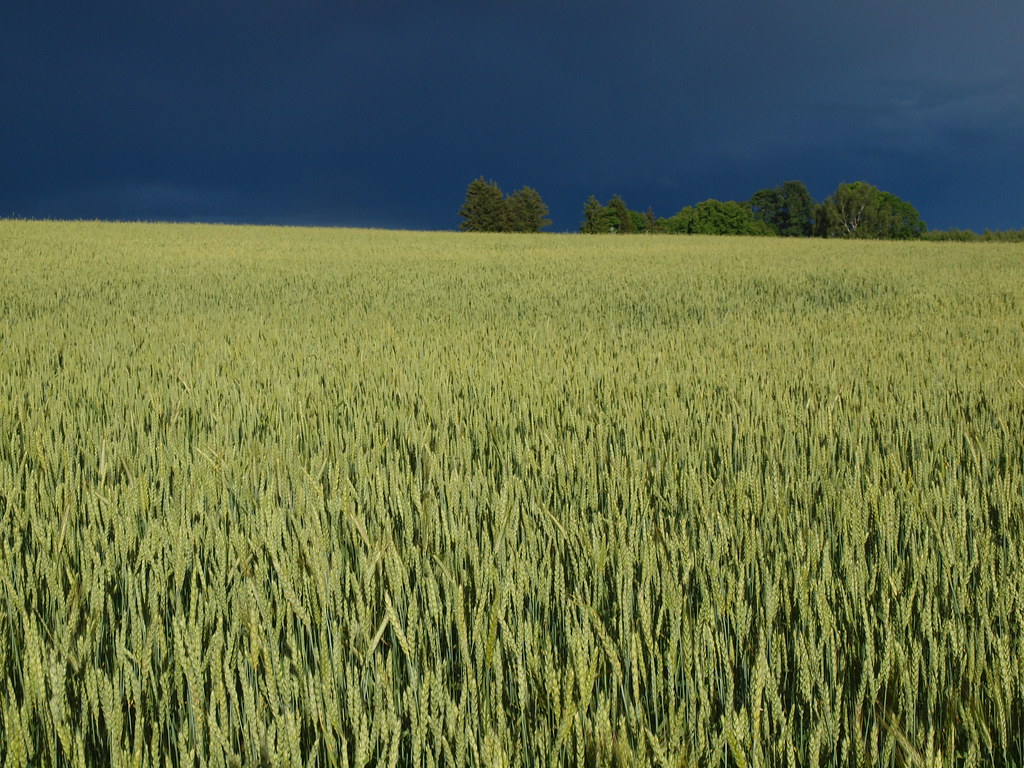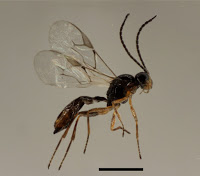As the growing season winds down, we are wrapping up our summer series with an Insect of the Week doubleheader: one post featuring both sunflower and triticale pests!
Sunflowers are an eye-catching plant with seeds that have numerous uses: as snacks, as birdseed, and as the raw material to produce sunflower oil.

While sunflowers are grown across the Prairie region, the bulk are grown in Manitoba. In fact, almost 90% of Canadian sunflower production took place in Manitoba in 2019. Over the same year, sunflowers were seeded across 28,000 hectares (69,300 acres) in the Prairies, producing 59,000 metric tonnes (65,000 US tons).

Triticale is the first man-made crop species, and was initially produced through the hybridization of wheat and rye to create this new cereal.

cc by 2.0 Jean Weber
Though its origins date back to 19th-century Scotland and Germany, triticale development didn’t begin in Canada until researchers at the University of Manitoba started to breed this cereal crop in 1954. Still grown in the Prairie provinces, triticale is utilized as a food source for both humans and animals. In 2019, triticale was seeded across 42,000 hectares (103,700 acres) across the Prairie region. The resulting harvest produced 63,900 metric tonnes (70,400 US tons).

cc by 2.0 Anita Priks
Several pests target sunflower and triticale alike. Monitoring and scouting protocols as well as economic thresholds (when available) are found in Field Crop and Forage Pests and their Natural Enemies in Western Canada: Identification and Management and the Cutworm Pests of Crops on the Canadian Prairies: Identification and Management Field Guide. Additional monitoring protocols exist to control certain pests.
Sunflower Pests
- Banded sunflower moth
- Beet cutworm
- Black cutworm
- Brown marmorated stink bug
- Darksided cutworm
- Dingy cutworm
- Grasshoppers
- Lygus bugs
- Painted lady butterfly
- Pale western cutworm
- Potato aphid
- Redbacked cutworm
- Red sunflower seed weevil
- Sunflower beetle
- Sunflower bud moth
- Sunflower maggot
- Sunflower midge
- Sunflower moth
- Sunflower receptacle maggot
- Sunflower seed maggot
- Wireworms

Triticale Pests
- Cereal leaf beetle
- Darksided cutworm
- Fall armyworm
- Fall field cricket
- Glassy cutworm
- Grasshoppers
- Greenbug
- Pale western cutworm
- Redbacked cutworm
- Variegated cutworm
- Wheat midge
- Wireworms

A deep thanks to all who have been reading Insect of the Week 2020! We look forward to publishing a whole new set of posts next season.





























